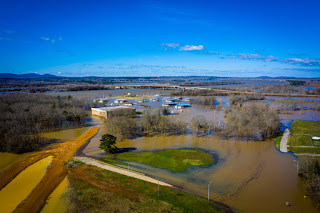For more than 50 years, the
National
Flood Insurance Program (NFIP), under the administration of FEMA (Federal
Emergency Management Agency), has been working hard to reduce losses suffered
due to flooding by home and business owners in the US. It does this by
providing affordable flood insurance, by educating the public about the risks
flooding poses and by encouraging communities to not only adopt but to enforce
flood plain management regulations.
Who Needs Flood
Insurance?
No home is completely risk-free from experiencing flood damage. According to
FEMA, floods are the most common natural disaster in the country and flood
damage is almost never covered in your
standard
homeowner's insurance policy. Furthermore, FEMA says that 98% of all
counties in the U.S. have experienced flooding at one time or another. It's
simple – if it rains where you live, you're at some risk of experiencing
flooding.
This means you don't have to live in a coastal area or next to a river to be
in danger of flooding. While it's true that homes located in low-risk flood
zones are less likely to be affected by flooding, it's important to understand
that “low risk” doesn't mean “no risk”.
Flood insurance is like other types of insurance in that you don't really want
it until you need it, but if you wait until you need it to get it, you've
waited too long! You should also be advised that, when you get
federally-backed flood coverage through the NFIP, there's a 30-day waiting
period before that coverage activates.
Skipping Flood
Insurance
If you've been living without flood insurance, perhaps you're now thinking
it may not be worth the risk. If you live in a high-risk flood zone you're
probably already covered, since your mortgage company likely requires it. But
consider this: more than 20% of the homes and businesses affected by flooding
are in the low- or moderate-risk flood zones, and as little as one inch of
flood water in your home or business can cause as much as $25,000 worth of
damage. Insurance that costs just a couple or a few hundred dollars annually to
maintain is well worth the protection you receive against these
losses. We've seen a rash of floods all over the country in the past few
years and, if history is an indicator, flooding incidents just look to be
getting worse.

